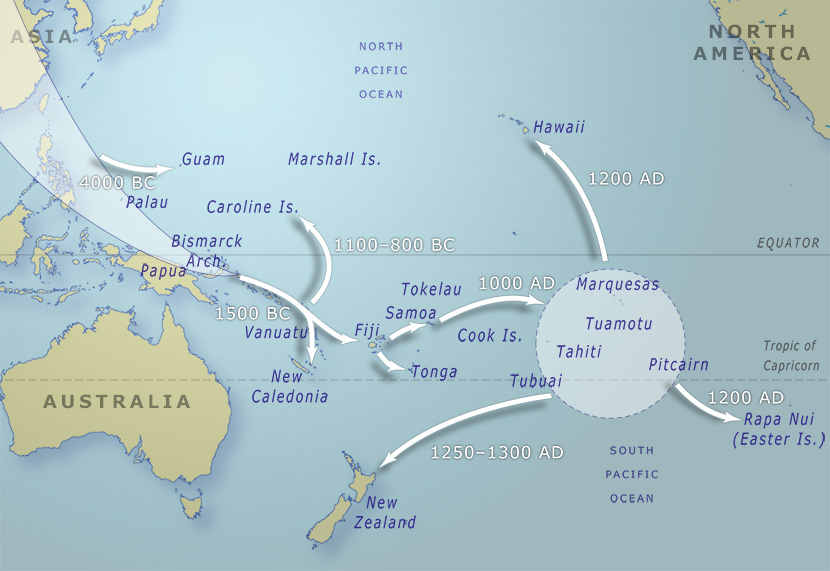
Between 4000 and 2000 BCE, a new technology emerged in island South-East Asia – the outrigger canoe. Over the next few thousand years variations of its design enabled the south-eastward peopling of the Pacific. Lapita people, the ancestors of Polynesians, sailed mostly against prevailing trade winds in a south-easterly direction. They probably did this by waiting for the seasonal reversal of winds, from November to April, when a north-westerly monsoon would have carried them east. This strategy provided them with a safe return option – if no land was found they could turn around and let the prevailing easterly trade winds blow them back to their home island. Polynesians settled Hawaii by sailing across the wind, and reached New Zealand by sailing downwind.
Using this item
Te Ara – The Encyclopedia of New Zealand
This item has been provided for private study purposes (such as school projects, family and local history research) and any published reproduction (print or electronic) may infringe copyright law. It is the responsibility of the user of any material to obtain clearance from the copyright holder.











Add new comment